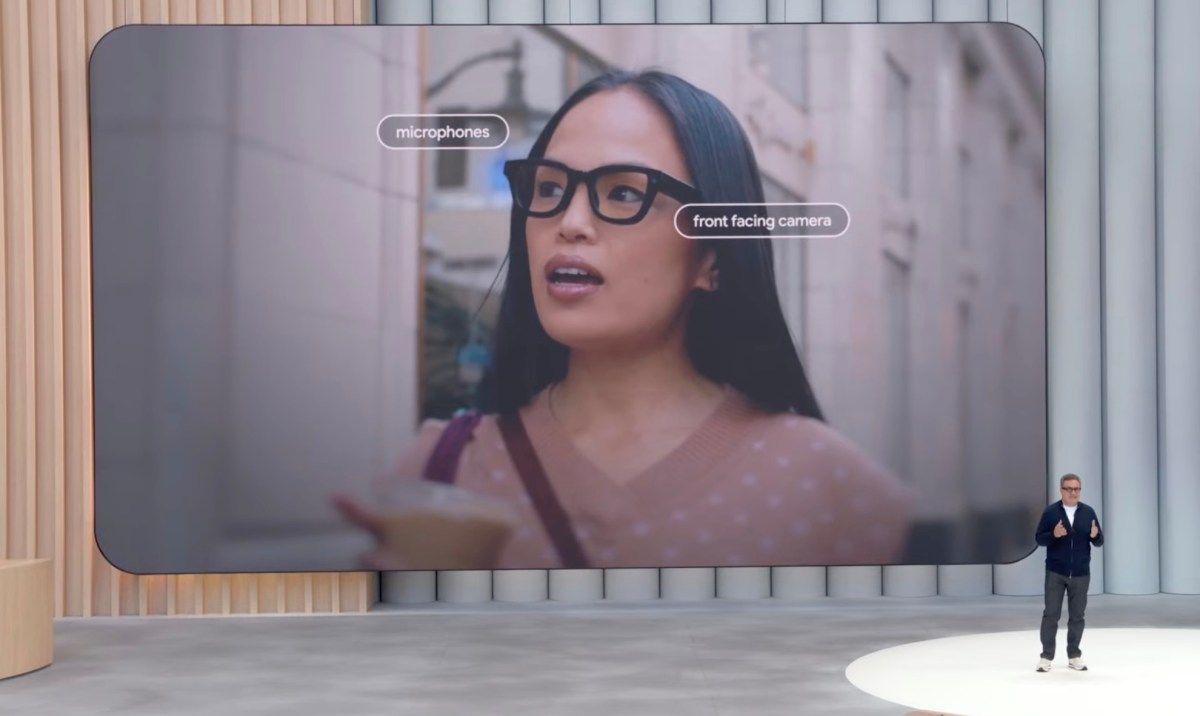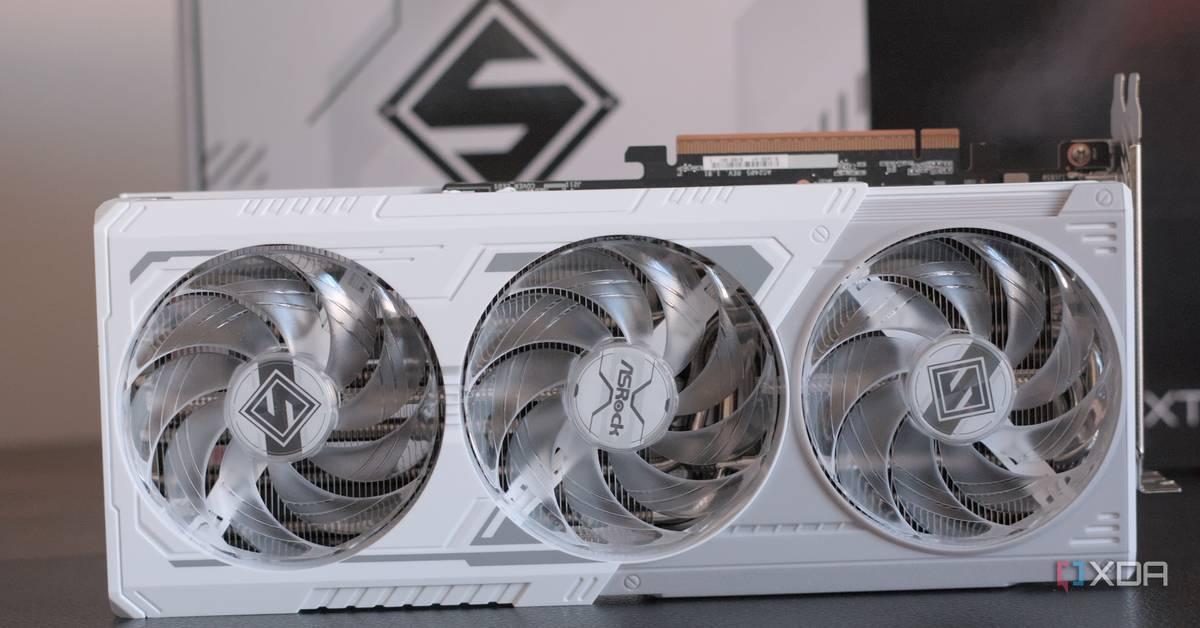Sony and AMD Collaborate on FSR 4-Based AI Upscaling for PS5 Pro, Coming in 2026
5 Sources
5 Sources
[1]
PS5 Pro to Implement FSR 4-Based AI Upscaling in 2026
Sony's ongoing collaboration with AMD through Project Amethyst is setting the stage for future enhancements in console graphics. Besides refining upscaling, this partnership may also boost ray tracing performance. The goal is to build a hardware architecture that makes the most of machine learning for graphics processing -- a strategy that could influence the design of future consoles. Sony plans to keep current software frameworks compatible while rolling out improved image quality for upcoming titles. Although Mark Cerny, the lead architect, mentioned that the new system might produce sharper and more detailed images than the current method, we'll need to wait for more data to see how it really performs. Sony's plan for updating the PS5 Pro involves some serious technical work. The console already comes with custom machine learning hardware that delivers 300 8-bit TOPS of power, which should be enough to run the new upscaling algorithm. Updating the upscaling network is a tough and time-consuming process, so for 2025, Sony is asking game development gurus to keep using the current PSSR system while the new version is in the works. Cerny explained that developing for consoles is different from PC development -- especially when it comes to keeping frame rates steady -- so the team will have to make specific adjustments to make sure the new upscaling method fits well with the existing hardware. Sony has confirmed that the PS5 Pro will get an AI-based upscaling upgrade for 2026 titles. This new feature is based on AMD's FSR 4 technology, and it will update the current PlayStation Spectral Super Resolution system by using a neural network that Sony and AMD developed together. This project started in late 2023, and FSR 4 is its first real-world result. The plan is to roll out an upscaling solution on the PS5 Pro that works similarly to FSR 4 -- taking the same inputs and delivering comparable outputs -- to improve image quality while staying compatible with existing software Source: Sources: EuroGamer, via TPU
[2]
Sony will give the PS5 Pro crisper graphics -- by backporting FSR 4
Sean Hollister is a senior editor and founding member of The Verge who covers gadgets, games, and toys. He spent 15 years editing the likes of CNET, Gizmodo, and Engadget. Today, the $700 PlayStation 5 Pro can already produce crisper, sharper, smoother, and more stable graphics than a PS5, if you sit close enough to appreciate them. But starting in 2026, the company hopes to imbue games with a new AI upscaling formula that'll make them even crisper, based on the AMD FSR 4 technique that's now shipping with AMD's new RX 9070 and RX 9070 XT graphics cards and appears to be competitive against Nvidia's latest DLSS as well. "Our target is to have something very similar to FSR 4's upscaler available on PS5 Pro for 2026 titles as the next evolution of PSSR," PlayStation lead architect Mark Cerny tells Digital Foundry. Many new PS5 Pro games already use an AI upscaler called "PlayStation Spectral Super Resolution" on their AMD-based chips. PSSR can turn 720p images into 4K ones on the fly while adding extra particle effects, and we've been relatively impressed by its quality compared to, say, FSR 3. But Sony and AMD's relationship didn't stop there -- it turns out that the neural network that underpins AMD's new FSR 4 upscaler was part of a collaboration with Sony, too, and Sony now plans to backport some of that work to its flagship PlayStation. In December, Sony and AMD announced a multi-year collaboration called Project Amethyst, one that we're now learning actually began back in 2023, and Cerny tells Digital Foundry that FSR 4 was the first fruit of those labors. "The neural network (and training recipe) in FSR 4's upscaler are the first results of the Amethyst collaboration," he says, calling it "a more advanced approach that can exceed the crispness of PSSR." For now, though, Cerny says it's still encouraging developers to use PSSR, as it will take time to "reimplement" FSR 4's upscaling network into the PS5 Pro and its games. Cerny suggests that Sony will have "its own implementations" of each algorithm it develops with AMD from here on out. He also hints Project Amethyst may be about more than home consoles, though: "Now to be clear, this technology has uses beyond PlayStation, and it's about supporting broad work in machine learning across a variety of devices - the biggest win is when developers can freely move their code from device to device," he tells Digital Foundry.
[3]
AMD confirms FSR 4 was co-developed with Sony
In brief: AMD has officially confirmed that the models used to develop FSR4, the latest version of its upscaling technology, were designed in collaboration with Sony. The company posted the news on X, revealing that a lot more is coming from this partnership. "FSR 4 is looking fantastic! Excited for the co-development with Sony Interactive Entertainment on the models used for the FSR 4 upscaler. This is just the beginning. Stay tuned for what's next," reads the post. For some context, PlayStation lead architect Mark Cerny unveiled Project Amethyst in December, a joint machine learning initiative between AMD and Sony. The project is centered on two main objectives: The first is to develop hardware architectures optimized for efficiently handling machine learning workloads. The second is co-developing high-quality convolutional neural networks (CNNs) specifically designed to enhance gaming graphics. Related reading: AMD FSR 4 is Very Impressive: 1440p Upscaling Tested The idea was that both companies could leverage this shared pool of ML architectures, training strategies, and models for their own products down the line. On the PlayStation side, this likely ties into the AI-accelerated upscaler in the PS5 Pro called Spectral Super Resolution (PSSR). Perhaps Sony aims to integrate some FSR 4 tech to further improve its PSSR algorithm. For AMD, the FSR 4 models were trained in collaboration with Sony's experts to enhance the upscaling and anti-lag performance we're seeing on AMD's latest GPUs. AMD says this is just the start - more exciting tech is coming from this partnership. It's a win-win for both companies. Sony gets to leverage AMD's latest AI upscaling know-how for its consoles, while AMD gains from Sony's experience with optimizing graphics for gaming workloads. Of course, we also can't forget that AMD has been supplying chips for PlayStation consoles dating back to the PS4 days. The current PS5 and PS5 Pro both feature customized AMD Zen 2 CPU and RDNA 2 GPU silicon. This Amethyst collaboration furthers the two companies' already tight relationship in the gaming space. On the PC graphics front, AMD has started shipping its new midrange RX 9070 XT and 9070 GPUs that offer FSR 4 upscaling. The XT model packs 64 compute units running at up to a 3GHz boost clock for $599, while the non-XT has 56 CUs at up to 2.5GHz for $549. Both come equipped with a hefty 16GB of GDDR6 VRAM to power solid 1440p gaming performance with FSR 4 enabled. Lower-end RX 9060 series GPUs were announced at CES too, but pricing and availability are still under wraps for those budget-friendly options.
[4]
Sony confirms AMD's FSR 4 is coming to PlayStation in 2026
TL;DR: Sony's PlayStation 5 Pro introduces enhanced AI hardware and PSSR upscaling technology, improving image fidelity over previous solutions. Collaborating with AMD, Sony aims to integrate FSR 4's advanced upscaling into future PSSR iterations by 2026. This partnership will continue, influencing the design of the upcoming PlayStation 6. With the launch of PlayStation 5 Pro, Sony's mid-generation refresh introduced a more powerful version of the popular console, and the addition of dedicated ML or AI hardware led to the arrival of PSSR. Sony's new upscaling technology, which stands for PlayStation Spectral Super Resolution, offers a massive improvement to image fidelity compared to previous solutions - including the console versions of AMD's FSR technology. AMD's FSR 4 for RDNA 4 GPUs is a game changer for the company's upscaling tech, image credit: AMD. Since the debut of PSSR, we've learned that Sony worked closely with AMD to fine-tune the AI capabilities of the PS5 Pro specifically for ray-tracing and upscaling. Now, with the arrival of RDNA 4 and the new Radeon RX 9070 Series, PlayStation lead system architect Mark Cerny has confirmed that the impressive new FSR 4 was the result of a collaboration between AMD and Sony that already exceeds the quality you get with PSSR. The good news for PlayStation gamers, especially those with a PS5 Pro, is that Sony is set to use the AI models and technology that serve as the foundation of FSR 4 and implement them into the next iteration of PSSR. "Our target is to have something very similar to FSR 4's upscaler available on PS5 Pro for 2026 titles as the next evolution of PSSR," Mark Cerny told Digital Foundry in a new interview. "It should take the same inputs and produce essentially the same outputs. Doing that implementation is rather ambitious and time consuming, which is why you haven't already seen this new upscaler on PS5 Pro." FSR 4 on PC is currently exclusive to RDNA 4 GPUs, specifically the new Radeon RX 9070 and Radeon RX 9070 XT - two GPUs with beefier specs and hardware than what's found inside the PlayStation 5 Pro. FSR 4 on PC is significantly more costly to run (computationally) than FSR 3.1, but Mark Cerny believes that it can be ported to the PS5 Pro's AI hardware without having to spend a lot of time rebuilding it. "RDNA 4 and the hardware in PS5 Pro are completely separate designs, which is why I speak in terms of 'reimplementation' on PS5 Pro when I talk about the new upscaling network used in FSR 4," Mark Cerny confirms. "And there may be slight tweaks to them in our world, as technical targets for console game development and PC game development tend to be slightly different. For example - as I said in the PS5 Pro technical video in December - 60 frames per second gaming is very important in the console world, but the PC world doesn't quite think about frame-rate the same way." Mark Cerny also confirms that his team and AMD have been closely collaborating on ML and AI for games graphics since late 2023, and that there are long-term plans for the two companies to continue this collaboration. This means FSR4 or even FSR 5 will be baked into the design of the upcoming PlayStation 6.
[5]
PlayStation 5 Pro upscaling tech will move closer to AMD's FSR 4 in 2026
Serving tech enthusiasts for over 25 years. TechSpot means tech analysis and advice you can trust. Something to look forward to: According to critics, the PlayStation 5 Pro's new machine learning implementation delivers noticeable improvements over previous console upscaling methods but still leaves room for growth. Thanks to Sony's partnership with AMD, which recently made significant advancements with FSR4, further improvements could begin materializing as early as 2026. PlayStation console architect Mark Cerny recently told Eurogamer that Sony plans to integrate the neural network behind AMD's FSR4 upscaler into the PlayStation 5 Pro's PSSR technique starting in 2026. This revelation comes just a day after AMD confirmed its collaboration with Sony on FSR4. AMD's newly launched Radeon RX 9000 graphics cards introduced the company's first machine learning-based upscaler, FSR4. Our analysis shows that this new method delivers significantly better image quality than AMD's previous spatial and temporal upscaling techniques, which are now widely used in console games. The PlayStation 5 Pro incorporates elements of the Radeon RX 9000's RDNA 4 architecture for its machine learning-based PlayStation Spectral Super Resolution (PSSR). However, its results don't yet match the quality of AMD's FSR4 or Nvidia's DLSS. Cerny explained that PSSR will more closely resemble FSR4 starting next year, as Sony collaborates with developers to integrate AMD's neural network. This transition will take time, as RDNA 4 and the PlayStation 5 Pro are not identical. The first RDNA 4 GPUs - the RX 9070 and RX 9070 XT - belong to a higher performance class than the PS5 Pro, which also lacks support for sparsity. Sparsity is a key technique that helps RDNA 4 and Nvidia hardware optimize upscaling workloads. However, Cerny believes the PS5 Pro can still achieve strong performance without it. Cerny describes the PlayStation 5 Pro as an early step in AMD and Sony's collaboration to refine machine learning-based upscaling for future products, likely including the PlayStation 6. Sony benefits from AMD's advancements in AI, while AMD gains from Sony's expertise in game optimization. AMD has provided the architecture for both the PlayStation 4 and PlayStation 5, and the PlayStation 6 is expected to continue this trend. Recent reports suggest that Sony's next-generation console could arrive in 2027 or 2028, featuring a Zen 6 CPU and a GPU based on RDNA's successor, reportedly named UDNA. Meanwhile, the Nintendo Switch 2 - expected to launch in the first half of this year - could provide another compelling example of ML-based upscaling on consoles. Utilizing Nvidia's Ampere architecture from the RTX 30 series, the upcoming device will be the first handheld to employ DLSS, or possibly a more lightweight variation of it.
Share
Share
Copy Link
Sony plans to implement AMD's FSR 4-based AI upscaling technology in the PS5 Pro by 2026, enhancing graphics quality through their ongoing collaboration called Project Amethyst.

Sony and AMD's Collaboration on AI Upscaling
Sony and AMD have announced a significant advancement in gaming graphics technology through their collaboration on AI-based upscaling. This partnership, known as Project Amethyst, aims to enhance the visual quality of games on the PlayStation 5 Pro and future consoles
1
.FSR 4 Technology and Its Implementation
AMD's FidelityFX Super Resolution 4 (FSR 4) technology, co-developed with Sony, is at the heart of this advancement. FSR 4 represents a significant improvement over previous upscaling methods, offering crisper and more detailed images
2
. Sony plans to integrate this technology into the PS5 Pro by 2026, updating the current PlayStation Spectral Super Resolution (PSSR) system3
.Technical Aspects and Challenges
The PS5 Pro already features custom machine learning hardware capable of 300 8-bit TOPS (Tera Operations Per Second), which is expected to be sufficient for running the new upscaling algorithm
1
. However, implementing FSR 4 on the PS5 Pro presents challenges due to differences in hardware architecture compared to PC GPUs4
.Timeline and Future Developments
Mark Cerny, PlayStation's lead architect, has confirmed that the target is to have an FSR 4-like upscaler available for PS5 Pro titles by 2026
5
. This implementation is described as ambitious and time-consuming, explaining why it wasn't available at the PS5 Pro's launch.Related Stories
Implications for Gaming Industry
This collaboration between Sony and AMD has broader implications for the gaming industry:
- It showcases the growing importance of AI in gaming graphics.
- It strengthens the partnership between Sony and AMD, potentially influencing future console designs.
- It sets a new benchmark for graphics quality in console gaming, potentially pushing competitors to innovate further.
Broader Context of AI in Gaming
The use of AI-based upscaling is not limited to Sony and AMD. Nvidia's DLSS technology has been a competitor in this space, and the upcoming Nintendo Switch 2 is rumored to feature a version of DLSS
5
. This trend indicates a shift towards AI-enhanced graphics becoming a standard feature in next-generation gaming hardware.References
Summarized by
Navi
[3]
Related Stories
AMD's FidelityFX Super Resolution 4 Set to Power PlayStation 5 Pro's Advanced Upscaling
03 Jul 2025•Technology

Sony and AMD's Project Amethyst: Shaping the Future of PlayStation with AI
02 Jul 2025•Technology

Sony's AI Innovation: Custom Hardware and Collaboration with AMD for Next-Gen Gaming Graphics
19 Dec 2024•Technology

Recent Highlights
1
AI Chatbots Sway Voters More Effectively Than Traditional Political Ads, New Studies Reveal
Science and Research

2
Google AI glasses set to launch in 2026 with Gemini and Android XR across multiple partners
Technology

3
EU Launches Antitrust Probe Into Google's AI Training Practices and Content Usage
Policy and Regulation




